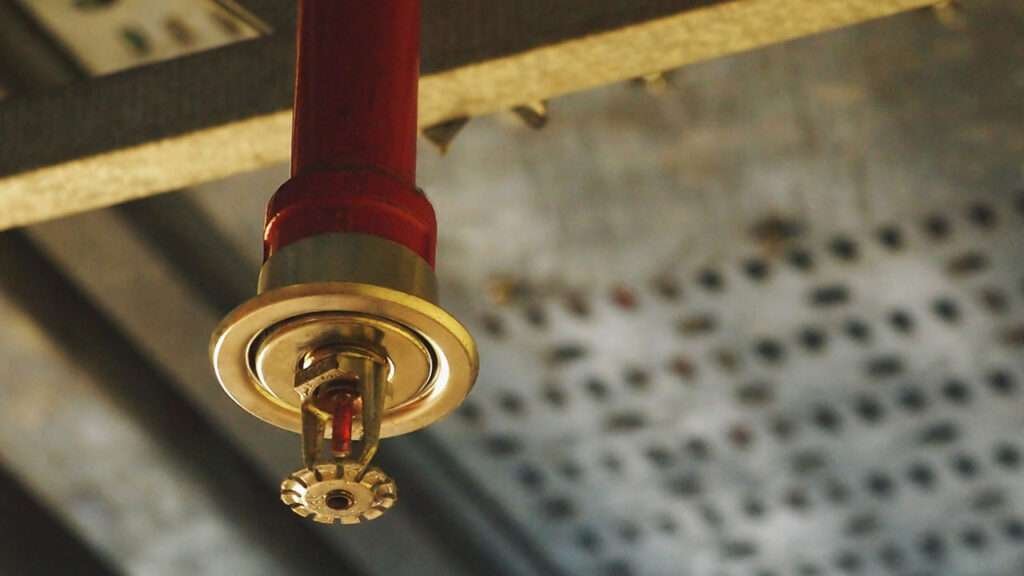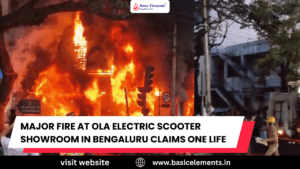Fire safety is a critical concern for every building owner, facility manager, and safety officer. Among the various fire protection measures available, firefighting sprinkler systems stand out as one of the most effective and reliable tools in our arsenal against fire-related incidents.
These automated systems have been protecting lives and property for over a century, evolving with technology to become even more efficient and responsive. In this comprehensive guide, we’ll explore the world of firefighting sprinklers, covering their types, functions, and the crucial role they play in modern fire protection strategies.
Whether you’re a seasoned fire safety professional or new to the field, this article will provide valuable insights to help you better understand and implement these life-saving systems.
What is a Fire Fighting Sprinkler System?
A fire fighting sprinkler system is an automated fire protection mechanism designed to detect and suppress fires in their early stages. Here’s a breakdown of key concepts:
Fire Sprinkler System: A network of pipes and sprinkler heads installed throughout a building. When activated by heat from a fire, these systems release water to control or extinguish the blaze.
Fire Protection System: A broader term encompassing various methods and equipment used to prevent, detect, and combat fires. Sprinkler systems are a crucial component of overall fire protection strategies.
Fire Suppression Systems: These systems work to control, contain, or extinguish fires. While sprinklers use water, other suppression systems might use foam, gas, or dry chemicals depending on the fire risks present.
Automatic Sprinkler System: This refers to the self-activating nature of modern sprinklers. They operate independently, triggered by heat, without requiring human intervention. This automatic response is key to their effectiveness in quickly addressing fires.
In essence, a fire fighting sprinkler system is an automatic, always-on guardian. It stands ready 24/7 to respond to fire threats, providing a first line of defence that can make the difference between a minor incident and a major disaster.
For fire safety officers and facility managers, understanding these systems is crucial for maintaining a safe environment and meeting regulatory requirements.

The Importance of Fire Fighting Sprinklers in Safety and Compliance
Fire fighting sprinklers play a crucial role in both ensuring safety and meeting regulatory requirements. For fire safety officers and facility managers, understanding this importance is key to effective risk management and legal compliance.
Fire Safety Regulations: Fire safety regulations vary by location but almost universally recognize the value of sprinkler systems. In many jurisdictions, sprinklers are mandatory for certain building types or occupancies. These regulations often specify:
- Required coverage areas
- System design standards
- Inspection and maintenance schedules
- Documentation and reporting requirements
Staying up-to-date with these regulations is essential. Non-compliance can result in fines, increased insurance premiums, or even facility shutdowns.
Building Codes: Modern building codes increasingly incorporate sprinkler requirements. These codes often:
- Mandate sprinklers in new construction above certain heights or floor areas
- Require sprinkler retrofits during major renovations
- Allow trade-offs in other fire protection measures when sprinklers are present
Understanding these codes helps in planning new projects or upgrades to existing facilities. Sprinklers can sometimes allow for more flexible or cost-effective designs in other areas of fire protection.
Life Safety Systems: Sprinklers are a critical part of a building’s overall life safety strategy. They work in conjunction with:
- Fire alarms and detection systems
- Emergency lighting and exit signs
- Smoke control systems
The presence of sprinklers can significantly improve occupant safety by:
- Controlling fire spread
- Reducing smoke and toxic gas production
- Providing additional evacuation time
When integrating these systems, it’s important to consider how sprinklers interact with other safety measures for optimal protection.
Fire Prevention Measures: While sprinklers are primarily a reactive measure, they also contribute to fire prevention:
- Their presence can deter arson attempts
- Regular inspections of sprinkler systems often reveal other fire hazards
- The design and placement of sprinklers can influence the layout of spaces, reducing fire risks
Importantly, sprinklers should be seen as part of a comprehensive fire prevention strategy that includes:
- Regular fire risk assessments
- Staff training in fire safety
- Proper storage and handling of flammable materials
- Maintenance of electrical systems and equipment
For fire safety officers and facility managers, the importance of Fire Fighting sprinklers extends beyond their direct fire-fighting capability. They are a cornerstone of regulatory compliance, a key factor in building design and safety planning, and an integral part of comprehensive fire prevention strategies. By fully appreciating the role of sprinklers, professionals can better protect lives, property, and business continuity while meeting their legal and ethical responsibilities.
Also Read: Understanding Fire Suppression Systems: Protecting Your Property and Lives
Types of Sprinklers in Fire Fighting: An Overview
Understanding the different types of fire fighting sprinkler systems is crucial for fire safety officers and facility managers. Each system has unique characteristics suited to specific environments and risks. Here’s an overview of the main types:

Wet Pipe System:
- The most common and simplest type
- Pipes are always filled with water under pressure
- Activation: Heat causes individual sprinkler heads to open, immediately releasing water
- Best for: Heated buildings where freezing isn’t a concern
- Advantages: Quick response, low maintenance, cost-effective
- Considerations: Potential water damage from accidental activation or pipe leaks

Dry Pipe System:
- Pipes contain pressurized air or nitrogen instead of water
- Activation: Heat opens sprinkler heads, releasing air pressure, which then allows water to flow
- Best for: Unheated areas or regions with freezing temperatures
- Advantages: Prevents pipe freezing, suitable for cold storage
- Considerations: Slight delay in water delivery, more complex maintenance
Pre-action Systems:
- Combines features of wet and dry systems
- Two-step activation: Fire detection system triggers water to fill pipes, then heat opens sprinkler heads
- Types: Single Interlock (detection system fills pipes) and Double Interlock (requires both detection and sprinkler activation)
- Best for: Areas with sensitive equipment or irreplaceable items
- Advantages: Reduces accidental discharge, provides extra protection for valuable assets
- Considerations: More complex, higher installation and maintenance costs
Deluge Systems:
- All sprinkler heads are open, pipes are not pressurized
- Activation: Fire detection system triggers water flow to all sprinklers simultaneously
- Best for: High-hazard areas with potential for rapid fire spread
- Advantages: Rapid, widespread water coverage for fast-developing fires
- Considerations: Potential for extensive water damage, requires careful design and maintenance

When selecting a system, consider:
- Building use and contents
- Environmental conditions (temperature, humidity)
- Speed of fire development in potential scenarios
- Water damage risks
- Maintenance capabilities and costs
- Local fire codes and insurance requirements
For fire safety officers and facility managers, it’s essential to:
- Understand the specific risks and needs of your facility
- Consult with fire protection engineers for system design and selection
- Ensure proper installation by qualified contractors
- Maintain systems according to manufacturer specifications and local regulations
- Train staff on system operation and emergency procedures
How Does a Fire Fighting Sprinkler System Work?
Understanding the mechanics of fire fighting sprinkler systems is crucial for fire safety officers and facility managers. Let’s break down the key components and processes:
Safety Mechanisms of Sprinklers:
- Heat-Sensitive Elements:
- Most modern sprinklers use glass bulbs filled with glycerin-based liquid
- Some older models use fusible metal links
- These elements are designed to break or melt at specific temperatures
- Pressure-Balanced Design:
- Sprinkler heads maintain a delicate balance between water pressure and the strength of the heat-sensitive element
- This ensures they don’t activate due to minor temperature fluctuations
- Individual Activation:
- Each sprinkler head operates independently
- This localized response minimizes water damage and focuses on the fire source
Activation Process of Sprinklers:
- Heat Detection:
- When a fire starts, it produces heat that rises to the ceiling
- The ambient temperature around the sprinkler head increases
- Trigger Point:
- When the temperature reaches the sprinkler’s rated activation point (typically 135-165°F or 57-74°C):
- Glass bulb shatters or
- Fusible link melts
- When the temperature reaches the sprinkler’s rated activation point (typically 135-165°F or 57-74°C):
- Water Release:
- The broken heat-sensitive element releases a plug holding back the pressurized water
- Water flows through the sprinkler head, hitting a deflector that spreads it in a specific pattern
- Continued Operation:
- Only the activated sprinkler(s) will release water
- This continues until manually shut off, typically by emergency responders
Water Supply for Sprinkler Systems:
- Primary Water Source:
- Usually connected to the municipal water supply
- Requires a dedicated main with sufficient pressure and flow rate
- Backup Water Supply:
- Many systems include on-site water storage tanks
- This ensures water availability during municipal supply interruptions
- Fire Pumps:
- Used to boost water pressure when needed
- Critical for tall buildings or large facilities
- Control Valves:
- The main control valve regulates water flow into the system
- It should be easily accessible but secured against tampering
- Monitoring:
- Water flow sensors detect system activation
- Pressure gauges help monitor system integrity
- Drainage:
- Systems include provisions for draining pipes for maintenance or after activation
Key Considerations for Fire Safety Officers and Facility Managers:
- Regular Inspections:
- Check for obstructions around sprinkler heads
- Ensure control valves are in the correct position
- Verify pressure gauges show proper readings
- Maintenance:
- Schedule professional inspections and tests as required by local regulations
- Replace any painted, corroded, or damaged sprinkler heads immediately
- System Modifications:
- Any changes to the building layout or use may require adjustments to the sprinkler system
- Always use qualified professionals for system modifications
- Staff Training:
- Ensure relevant staff understand basic system operation
- Train on emergency procedures, including manual system shutdown
- Documentation:
- Maintain detailed records of inspections, tests, and maintenance
- Keep system design plans and hydraulic calculations accessible
Advantages and Limitations of Different Fire Fighting Sprinkler Systems
For fire safety officers and facility managers, it’s crucial to understand both the benefits and limitations of fire fighting sprinkler systems. This knowledge helps in making informed decisions about fire protection strategies.
Benefits of Fire Fighting Sprinklers:
- Early Fire Control:
- Activate automatically at the fire’s early stages
- Can control or extinguish fires before they spread
- Life Safety:
- Significantly reduce fire-related deaths and injuries
- Provide additional evacuation time for occupants
- Property Protection:
- Minimize fire and smoke damage to buildings and contents
- Reduce water damage compared to firefighter hoses
- 24/7 Protection:
- Always on standby, providing round-the-clock fire protection
- Localized Response:
- Only sprinklers near the fire activate, minimizing water damage
- Insurance Benefits:
- Often leads to reduced insurance premiums
- May allow for increased building size or occupancy limits
- Code Compliance:
- Help meet or exceed fire safety regulations and building codes
Limitations of Fire Fighting Sprinkler Systems:
- Water Damage:
- While less than firefighter hoses, water can still damage sensitive equipment or materials
- Initial Costs:
- Installation can be expensive, especially in retrofitting existing buildings
- Aesthetics:
- Some may consider exposed sprinkler heads unsightly
- Accidental Activation:
- Though rare, it can occur due to mechanical failure or physical damage
- Freezing Risk:
- Wet pipe systems in unheated areas can freeze and burst
- Specific Hazards:
- Not suitable for all types of fires (e.g., certain chemical fires)
- Maintenance Requirements:
- Regular upkeep is essential for reliable operation
Maintenance Requirements for Fire fighting Sprinklers:
- Regular Inspections:
- Visual checks: Weekly to monthly
- Professional inspections: Annually or as required by local codes
- Testing:
- Main drain test: Annually
- Alarm tests: Quarterly
- Sprinkler head sample testing: At 10, 25, and 50 years, then every 10 years
- Repairs and Replacements:
- Promptly address any damaged or corroded components
- Replace painted or loaded sprinkler heads immediately
- System Flushing:
- Periodically flush the system to remove sediment
- Antifreeze Systems:
- Check antifreeze concentration annually before cold weather
- Valve Maintenance:
- Regularly exercise control valves to ensure proper operation
- Documentation:
- Maintain detailed records of all inspections, tests, and maintenance activities
- Staff Training:
- Regularly train maintenance staff on system components and proper care
- Professional Servicing:
- Schedule comprehensive service by qualified professionals as required by local regulations
Key Considerations for Fire Safety Officers and Facility Managers:
- System Selection:
- Choose the right type of system based on your facility’s specific needs and risks
- Integration:
- Ensure sprinkler systems are part of a comprehensive fire safety strategy
- Upgrade Planning:
- Regularly assess if system upgrades are needed due to building changes or new technologies
- Compliance:
- Stay informed about changing regulations and adjust maintenance practices accordingly
- Budget Allocation:
- Plan for ongoing maintenance costs in addition to initial installation expenses
- Emergency Preparedness:
- Develop and practice procedures for system failures or accidental activations
By understanding these advantages, limitations, and maintenance requirements, fire safety officers and facility managers can maximize the effectiveness of their sprinkler systems while minimizing potential drawbacks. This balanced approach ensures optimal fire protection, regulatory compliance, and responsible resource management.
The Role of Technology in Modern Fire Fighting Sprinkler Systems
As fire safety officers and facility managers, it’s crucial to stay informed about technological advancements in fire protection. Modern fire fighting sprinkler systems are increasingly incorporating smart technologies and Internet of Things (IoT) capabilities, enhancing their effectiveness and efficiency.
Smart Fire Fighting Sprinkler Technology:
- Advanced Sensors:
- Multi-criteria detectors combine heat, smoke, and CO detection
- More accurate fire detection with fewer false alarms
- Intelligent Activation:
- Systems can analyze data from multiple sensors before activating
- It helps distinguish between actual fires and non-threatening heat sources
- Addressable Systems:
- Pinpoint the exact location of activated sprinklers
- Facilitates quicker response and more targeted firefighting efforts
- Adjustable Sensitivity:
- Can be programmed to adapt to different conditions (day/night, occupancy levels)
- Improves system performance while reducing nuisance activations
IoT in Fire Protection Systems:
- Remote Monitoring:
- Real-time system status accessible via smartphones or tablets
- Allows for immediate notification of system events or issues
- Predictive Maintenance:
- AI-driven analysis of system performance data
- Predicts potential failures before they occur, enabling proactive maintenance
- Integration with Building Management Systems:
- Coordinates with HVAC, security, and other building systems
- Enhances overall emergency response effectiveness
- Data Analytics:
- Collects and analyzes data on system performance and activation patterns
- Helps in refining fire protection strategies and resource allocation
- Cloud-Based Management:
- Centralized control and monitoring of multiple facilities
- Facilitates easier compliance reporting and record-keeping
Advancements in Fire fighting Technology:
- Water Mist Systems:
- Use less water than traditional sprinklers
- Effective for a wider range of fire types, including liquid and electrical fires
- ESFR (Early Suppression Fast Response) Sprinklers:
- Designed for high-challenge fire protection scenarios
- Deliver larger water droplets at higher velocities
- Video Image Smoke Detection:
- Uses video analytics to detect smoke before it reaches sprinklers
- Particularly useful in large, open spaces
- Corrosion-Resistant Materials:
- New pipe materials and coatings extend the system’s lifespan
- Reduces maintenance needs and improves long-term reliability
- Sustainable Fire Suppression Agents:
- Development of environmentally friendly alternatives to traditional agents
- Addresses concerns about water conservation and chemical safety
Implementation Considerations:
- Cost-Benefit Analysis:
- Evaluate long-term savings against higher initial investment
- Consider reduced false alarms, maintenance costs, and potential insurance benefits
- Integration Challenges:
- Ensure new technologies are compatible with existing infrastructure
- Plan for potential upgrades to supporting systems (e.g., power, network)
- Cybersecurity:
- Implement robust security measures for IoT-connected systems
- Regular software updates and patch management are crucial
- Training Requirements:
- Staff may need additional training to manage advanced systems
- Consider ongoing education to keep pace with technological changes
- Regulatory Compliance:
- Verify that new technologies meet or exceed current fire safety standards
- Stay informed about evolving regulations regarding smart fire protection systems
- Scalability:
- Choose systems that can grow and adapt to your facility’s needs
- Consider future expansion or changes in building use
For fire safety officers and facility managers, embracing these technological advancements can significantly enhance fire protection capabilities. Smart sprinkler systems and IoT integration offer improved accuracy, efficiency, and control. However, it’s important to approach implementation thoughtfully, considering both the benefits and the challenges of adopting new technologies.
Conclusion: Invest in a Reliable Fire Fighting Sprinkler System to Safeguard Your Property and Lives
As fire safety officers and facility managers, your primary responsibility is to protect lives and property. The information presented in this article underscores the critical importance of fire fighting sprinkler systems in achieving this goal







